You can crush eggshells to create sharp barriers that deter slugs and snails from reaching your plants. Grind them into fine powder smaller than 1/12 inch for superior protection around seedling bases. Apply crushed shells directly around vulnerable young plants, creating protective circles pests can’t cross. Combine eggshells with diatomaceous earth or coffee grounds for enhanced effectiveness. Remember to reapply after heavy rainfall and redistribute shells regularly to maintain sharp edges and prevent gaps that compromise your garden’s natural defense system.
Creating Sharp Physical Barriers Against Crawling Pests
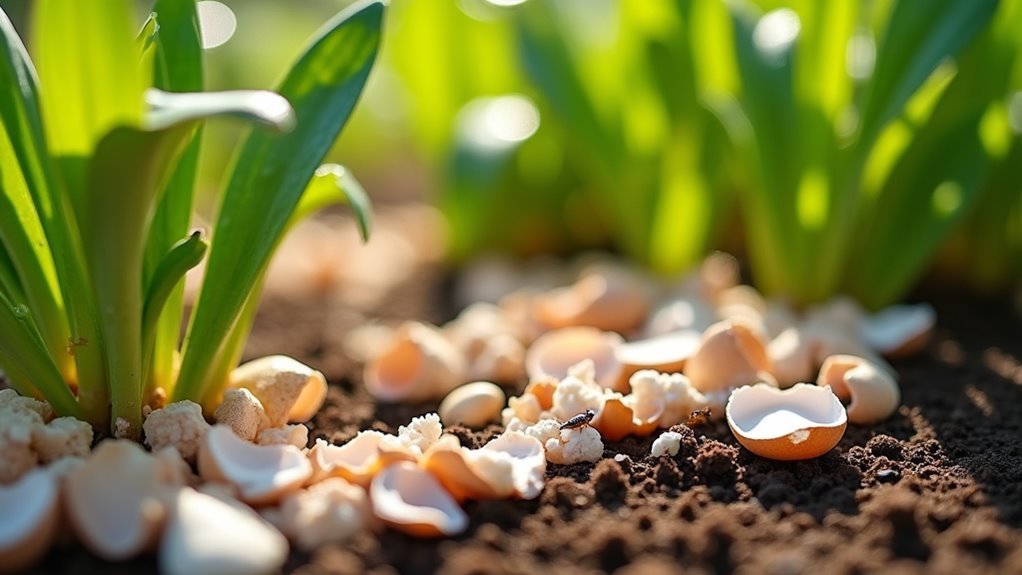
When you crush eggshells and scatter them around your plants, you’re creating a natural fortress that stops soft-bodied pests in their tracks. The sharp edges of crushed eggshells form an effective pest deterrent that makes crawling pests think twice before approaching your precious foliage.
Slugs and snails can’t comfortably navigate across these abrasive surfaces, protecting both plant roots and leaves from damage.
The jagged texture of crushed eggshells creates an uncomfortable barrier that deters slugs and snails from reaching your plants.
This organic pest control method works by disrupting the delicate bodies of unwanted visitors while leaving beneficial insects unharmed. You’ll find this barrier particularly effective when you combine eggshells with coffee grounds, creating an enhanced protective zone.
Remember to reapply your eggshell barriers after heavy rainfall, as moisture can wash away this natural defense system.
Making Eggshell Powder for Maximum Pest Deterrent Effect
Fine eggshell powder delivers superior pest protection compared to larger crushed pieces, creating an even more impenetrable barrier around your plants.
Start by rinsing shells thoroughly to remove egg residue, then dry them completely to prevent mold. Use a food processor to grind shells into fine powder—make sure the consistency’s smaller than 1/12 inch for peak effectiveness.
Don’t lightly crush them; you need truly fine particles. Spread a thin layer around plant bases to keep pests like slugs and beetles away. The sharp microscopic edges deter crawling insects effectively.
Reapply after heavy rainfall when moisture washes the powder away. Store excess powder in dry locations for future use. Using eggshells this way maximizes their pest-deterrent potential.
Strategic Application Around Vulnerable Plants and Seedlings
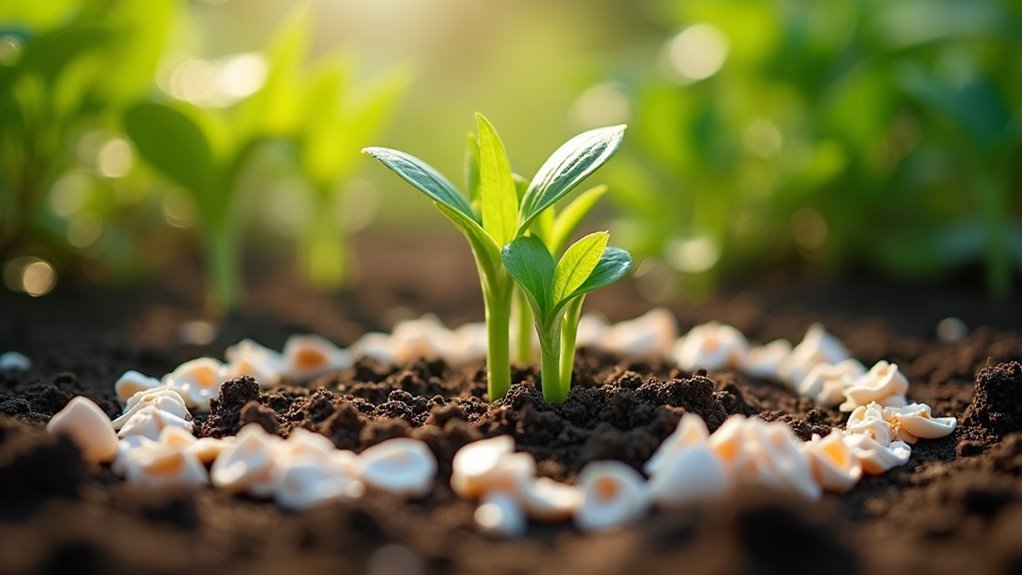
Since young plants and seedlings face the greatest threat from crawling pests, you’ll need to focus your eggshell application efforts where they’re most vulnerable.
Apply a thin layer of crushed eggshells directly around the base of each seedling, creating a protective circle that soft-bodied pests can’t cross. The sharp fragments will deter pests like slugs and snails while enriching your garden soil with essential calcium for stronger plant development.
Focus on newly transplanted seedlings and vulnerable plants that show signs of pest damage.
Place the eggshell barrier close enough to protect roots but avoid direct contact with stems. After heavy rain, reapply the crushed eggshells to maintain their effectiveness, ensuring your most delicate plants stay protected throughout the growing season.
Combining Eggshells With Other Natural Pest Control Methods
While eggshells provide excellent standalone protection, you’ll multiply their effectiveness by incorporating them into a thorough natural pest control strategy.
Crush the eggshells and combine them with diatomaceous earth to create a powerful abrasive barrier that stops slugs and beetles while keeping beneficial insects safe.
You can also integrate eggshells in the garden with companion planting techniques—sprinkle crushed shells around marigolds planted near your vegetables to attract helpful predators.
Adding eggshells to homemade soapy sprays boosts plant resilience through calcium enrichment.
This extensive pest management approach requires regular monitoring and proper cultural practices, creating a balanced ecosystem that minimizes damage while supporting beneficial wildlife in your garden.
Maintaining Eggshell Barriers After Weather and Watering
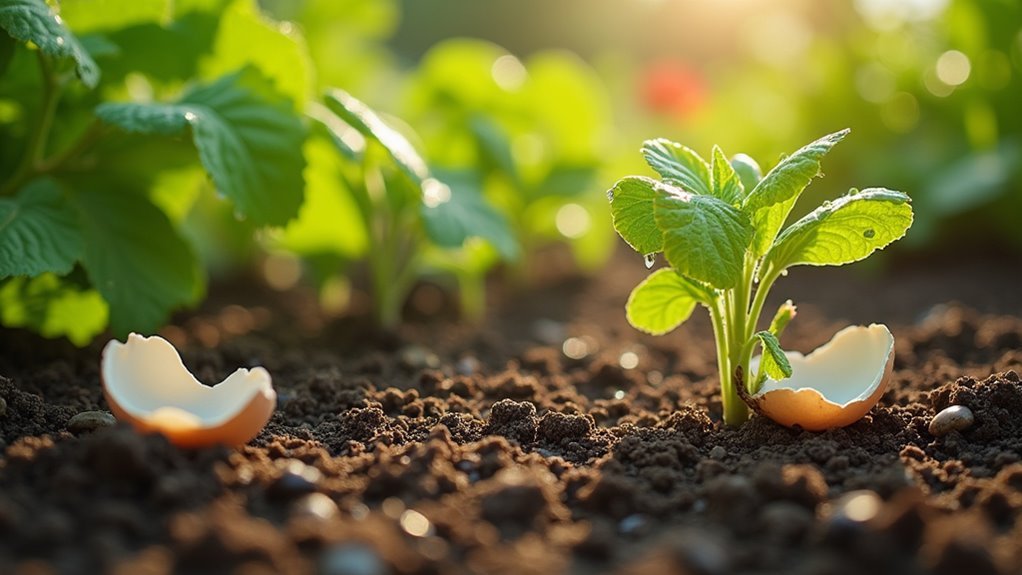
Although eggshells create an effective pest barrier, weather conditions and regular watering can diminish their protective power over time.
You’ll need to monitor your garden barriers regularly, especially after rainfall or watering sessions. Heavy rain washes away crushed shells, reducing their effectiveness against pests like slugs and beetles.
Check for pooling or clumping of shells that creates gaps crawling insects can exploit. Use a light rake or your hands to redistribute the barrier, ensuring sharp edges remain exposed.
If shells become too degraded, add them to your compost pile and apply fresh ones right away to maintain soil protection.
Consider combining eggshells with diatomaceous earth to enhance your garden’s defensive capabilities against persistent pests.
Frequently Asked Questions
How to Use Eggshells for Pest Control?
You’ll crush clean eggshells into sharp pieces and sprinkle them around plants’ bases. This creates a barrier that deters slugs and snails while adding calcium to soil, preventing blossom end rot.
Do Eggshells Keep Bugs Away From Plants?
Yes, you’ll find eggshells effectively keep bugs away from plants. They create sharp barriers that deter slugs and snails, while calcium carbonate disrupts insect digestive systems, naturally protecting your garden.
Can I Put Eggshells Directly in My Garden?
You can put crushed eggshells directly in your garden. They’ll deter slugs and snails with their sharp edges while slowly releasing calcium into the soil to benefit your plants.
Which Plants Do Not Like Egg Shells?
You shouldn’t use eggshells around acid-loving plants like blueberries and azaleas, delicate seedlings such as cucumbers and squash, young lettuce, carrots requiring drainage, or flowers preferring sandy soils.
In Summary
You’ve discovered five practical ways eggshells can defend your garden naturally. You’ll create effective barriers, make deterrent powder, apply it strategically, combine methods for better results, and maintain protection through seasons. Don’t overlook this free, eco-friendly solution that’s already in your kitchen. Start collecting those shells today and you’ll notice fewer slugs, snails, and crawling pests threatening your plants. Your garden will thank you for this simple yet powerful protection method.

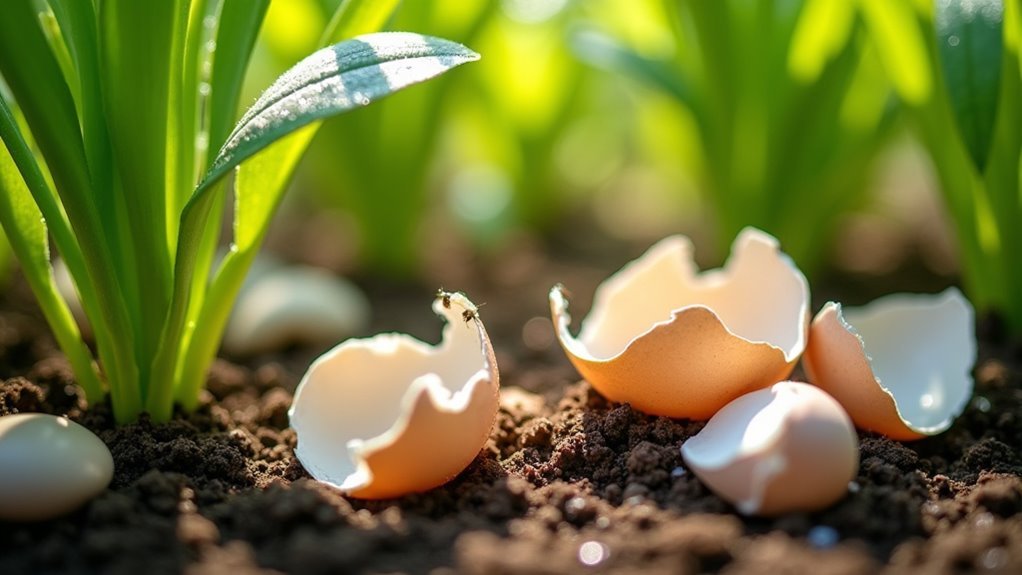
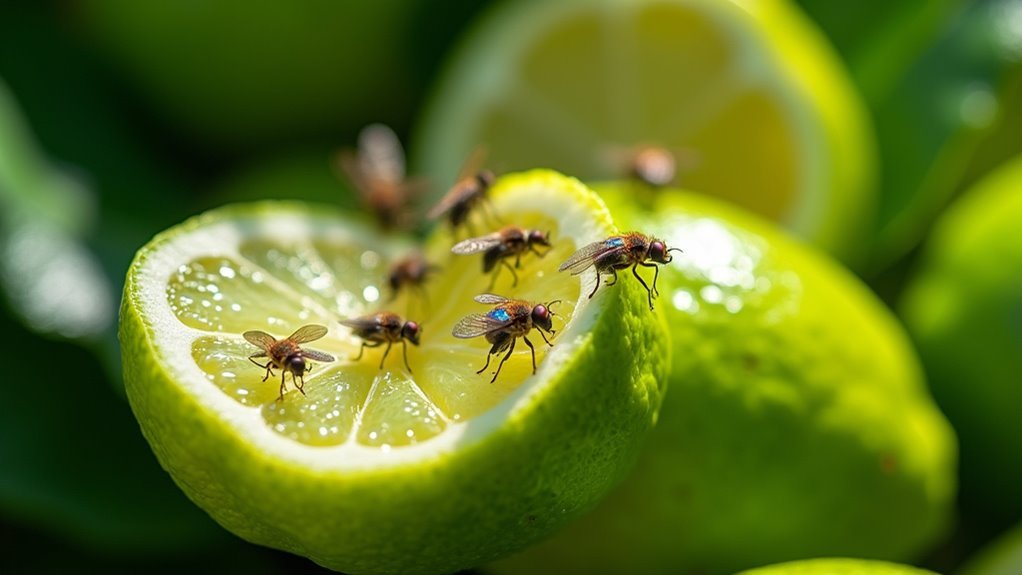
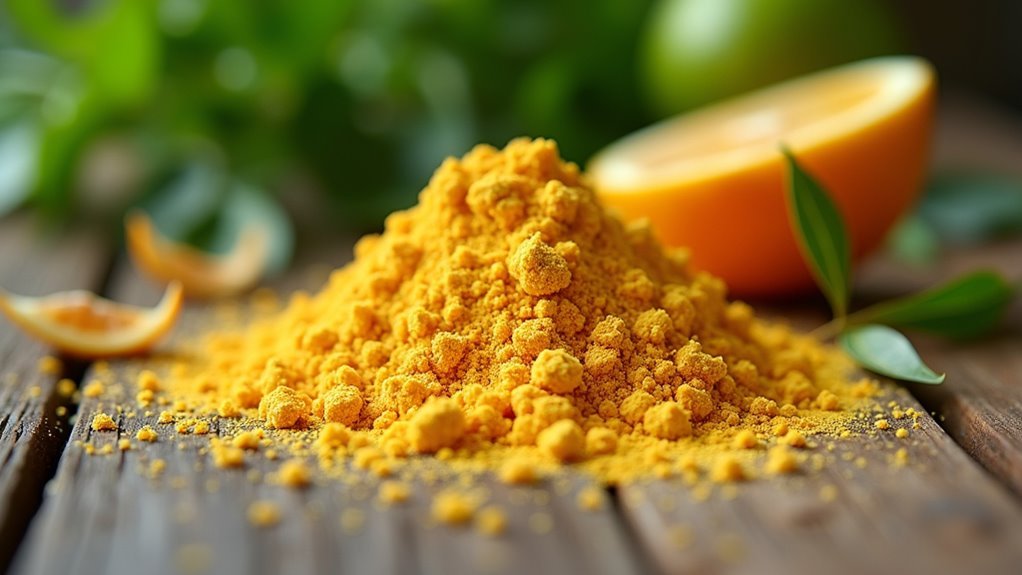
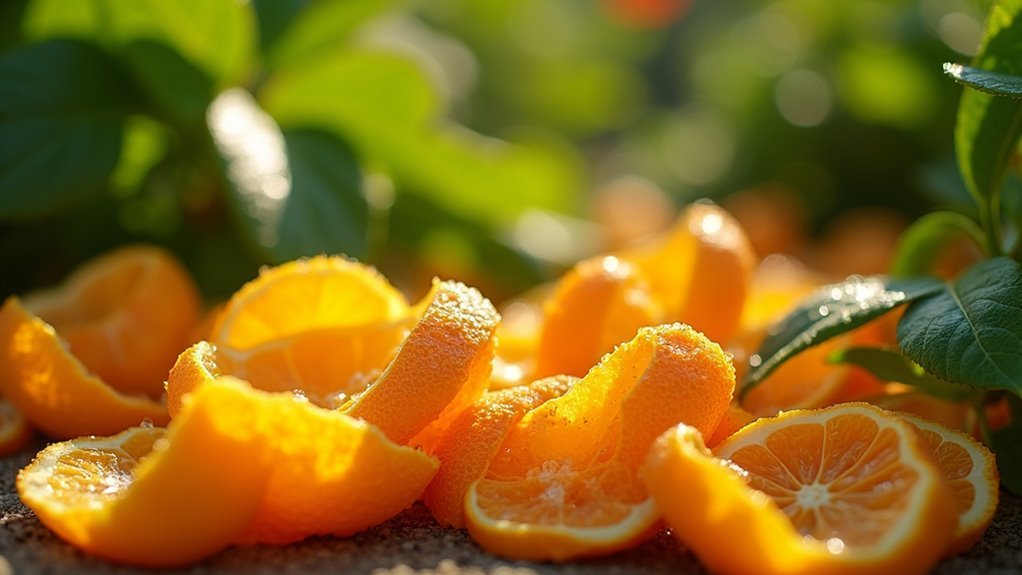
Leave a Reply